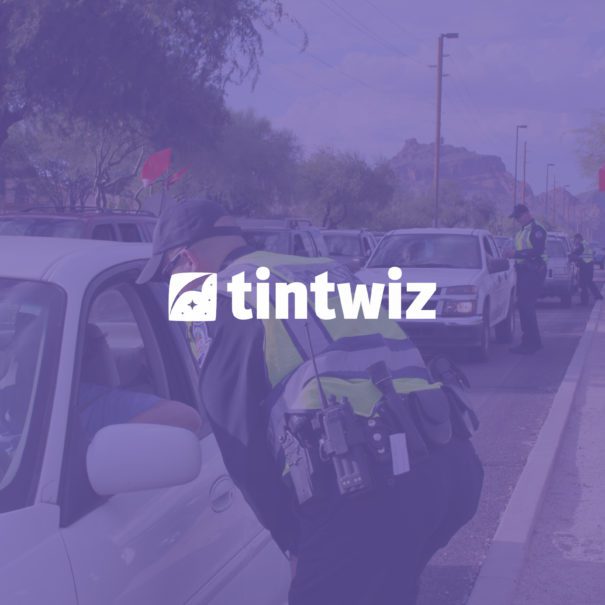Darkest legal tint for Sedans in Alabama
- Windshield: Non-reflective tint is allowed on the top 6 inches of the windshield
- Front Side windows: Must allow more than 32% of light in
- Back Side windows: Must allow more than 32% of light in
- Rear window: Must allow more than 32% of light in
Darkest legal tint for SUV and Vans in Alabama
- Windshield: Non-reflective tint is allowed on the top 6 inches of the windshield
- Front Side windows: Must allow more than 32% of light in
- Back Side windows: Any shade can be used
- Rear window: Any shade can be used
Table of contents
- Darkest legal tint for Sedans in Alabama
- Darkest legal tint for SUV and Vans in Alabama
- Can Front Side Windows and Windshields Be Tinted in Alabama?
- How Dark Can Legal Window Tint Be in Alabama?
- Are There Window Tint Reflectivity and Tint Color Laws in Alabama?
- Medical Exemptions for Window Tint Rules in Alabama
- Legal Window Tint Certificates in Alabama
- Window Tint Violation Penalties in Alabama
- Window Tinting Laws in Alabama
- Alabama Window Tint Law Medical Exemption
- Alabama Window Tint Ticket Cost
Please note: The accuracy, completeness, adequacy or currency of the content is not warranted or guaranteed. We are not lawyers or a law firm and we do not provide legal advice. We recommend you consult a lawyer or other appropriate professional if you want legal advice.

Can Front Side Windows and Windshields Be Tinted in Alabama?
Window tint is useful as a driver safety measure as it blocks glare from the sun and helps a motorist more safely control a vehicle which is why windshield tint of some type is legal in almost every part of the United States. In Alabama, front windshield tint is permitted along the top six inches of the glass. Alabama windshield tint must be non-reflective. This regulation applies to all private vehicles including cars, trucks, and SUVs.
In Alabama car window tint on the side windows and rear windshield (both front and rear side windows) may have a window tint with a Visible Light Transmission (VLT) percentage of 32% or higher, meaning at least 32% of visible light must be able to pass through the tinted window. (The lower the number, the darker the tint, so a 95% VLT is almost transparent, while 5% VLT appears almost black and opaque.
Vans and SUVs in Alabama must also limit front side window tint to 32% VLT or lighter but on rear windows and the rear windshield laws are much looser.
How Dark Can Legal Window Tint Be in Alabama?
As noted, windshields on all types of vehicle in Alabama may only have tint along the top six inches of the glass and it must be nonreflective, while front side windows may have tint as dark as 32% VLT. On SUVs and vans, the tint on the rear windows can be much darker. In fact, there is no restriction on how dark window tint can be for rear side windows or rear windshields for vans and SUVs in Alabama. Very dark rear window tint can provide excellent privacy and is thus popular with many Alabama motorists, especially parents with young children who wish to ensure the privacy and security of their families.
Dark rear window tint in Alabama is also ideal for companies that offer transportation service and wish their clients to be comfortable while in their vehicles. And note that even the 32% VLT tint to which sedans and the front side windows of SUVs and trucks are limited is still dark enough to provide decent privacy.
Are There Window Tint Reflectivity and Tint Color Laws in Alabama?
Alabama car window tint laws are quite flexible when it comes to window tint colors and are relatively permissive when it comes to reflectivity, or how much the window tint makes windows act like mirrors rejecting light. Current Alabama tint law permits all colors of window tint, and this applies to front and rear side windows, rear windshields, and the band atop the front windshield of a vehicle. Front windshields may not have any type of tint below that six-inch band of window film, however, and this includes colored window tint even if it does not reduce VLT percentage.
As for reflection, which can reduce the glare of sunlight by day and oncoming headlights at night, thus making driving safer, windows must not be more than 20% reflective under Alabama window film rules. (Reflective window film can also reduce interior cabin temperatures, meaning less use of AC and a more comfortable driver experience, and it may pay for its own installation cost in reduced fuel consumption thanks to this temperature reduction.)
Do note that obstructed windows can be illegal in Alabama, and if a window tint becomes bubbled, cracked, hazy, or otherwise damaged in such a way that it reduces clarity of view through a window it may fall out of regulation. Because many colored window tints are of inferior quality and can become compromised over time, it may be best to avoid using colored tints to make sure your vehicle does not become in violation of Alabama’s tinting laws for cars.
Unlike with many states, Alabama vehicle laws do not place any requirements for or limits in side view mirrors as related to window tinting.
Medical Exemptions for Window Tint Rules in Alabama
Under Alabama state law, many medical conditions can allow a motorist to apply window tint to a vehicle that would be illegal without a specific exemption. For drivers with certain skin or eye conditions that necessitate extra protection against sunshine, medical window tint exemptions can allow for much darker window tinting even on front side windows.
You must consult with your doctor and get a signed and certified document proving you qualify for medical window tint exemptions and then present this paperwork to a licensed window tint installer prior to having the otherwise illegal tint applied. And once you have window tint applied under these special circumstances, make sure to keep the doctor-approved documents in your vehicle at all times, as they may need to be presented to a police officer to prove the tint is allowed.
Also note that many transparent or nearly transparent window films can still block up to 99% of the sun’s UV rays, so you may not require dark window tint if it is ultraviolet light exposure that you are trying to limit. Clear window film that blocks UV light is the safest way to ensure compliance with Alabama window tint laws.
Legal Window Tint Certificates in Alabama
Every window tint of a vehicle with aftermarket window film applied must have a sticker that clearly shows the tint is in compliance with Alabama state law. These sticklers or labels should be applied between the glass and the layer of tint and when installed by professionals they are subtle and do not readily change the appearance of the vehicle, yet they can be spotted and easily read by someone who is searching for them.
Make sure to talk to your window tint installer prior to the application of tint and confirm that that they are using a window tint legal under Alabama law and will apply all proper labels and stickers as needed.
Window Tint Violation Penalties in Alabama
Most police officers in Alabama will let non-criminal offenders go with a warning after a first window tint offense is recorded, but the penalties for illegal window tint can become rather severe with repeated incidents. A first conviction of an illegal window tint offense can trigger a $100 fine, 10 days in jail, or even both, though this will rarely be enforced. A second offense can lead to a $200 penalty and an entire month (30-day period) in prison. Third and any subsequent window tinting violations can see the offender fined $300 and imprisoned for up to three months.
Given how permissive Alabama state laws that govern window tint are in the first place, there is really never a good reason to get illegal window tint in Alabama. If you have recently moved to the state with a vehicle that was previously under another state’s laws or if you have bought a car that you fear may not be in compliance with Alabama tint laws, bring the vehicle to a certified window tint installation shop and have it inspected. If they find that your car’s window tint is not in compliance with state tint regulations, any respectable window tint installer can also easily remove car window film without damaging the automobile, and bringing your car, truck, or SUV into compliance with state tinting regulations will be much less expensive than risking fine after fine, not to mention the potential jail time.
Also keep in mind that once old window tint has been removed, that’s the best time to have new window film applied, as the windows and windshield beneath the window tint will be as clean as possible, having been long protected by the window film coming off the car.
All vehicles registered in the State of Alabama must comply with Alabama’s window tinting law, Act. 96-534, effective August 15, 1996.
The percent of visible light allowed through your car windows is called VLT: Visible Light Transmission. The percentage of light allowed through your film and glass in Alabama is very specific and different for passenger car such as a sedan vs a multi-purpose passenger and recreational vehicle. The lower the % of the tint, the darker your window will be as the VLT is referring to the amount of light being let in.
Please note: The accuracy, completeness, adequacy or currency of the content is not warranted or guaranteed. We are not lawyers or a law firm and we do not provide legal advice. We recommend you consult a lawyer or other appropriate professional if you want legal advice.
Window Tinting Laws in Alabama
Passenger Car and Station Wagon
- Only the upper six inches of the front windshield may be tinted. The material applied must be transparent.
- All other windows (side and rear) may have tinting that allows at least 32% light transmission with a 3% tolerance.
- The reflective material may not reflect more than 20% of light.
Multi-purpose Passenger and Recreational Vehicles
- Front windshield and front seat windows are subject to the same restrictions as passenger cars and station wagons.
- On the windows behind the driver, darker tinting is permitted as allowed by the manufacturer of the vehicle by Federal Law.
- Outside rearview mirrors on each side of the vehicle are required when the darker tint is installed.
The manufacturer determines the classification of the vehicle.
Question: Can you legally tint your windshield in Alabama?
Answer: Only the upper 6 inches of a windshield can be tinted in Alabama and must remain transparent, which means a window film strip is allowed but you can not apply a 6 inch opaque vinyl strip legally.
Alabama Window Tint Law Medical Exemption
Title 32, Motor Vehicles and Traffic, Chapter 5C:
Medical Waivers (32-5C-4): You may apply for an exemption from this chapter for certain medical conditions. Certification must be made by your physician. The exemption may be issued with conditions and limitations prescribed by the Department of Public Safety.
Compliance Stickers (32-5C-6): All new tinting and vehicles with existing tinting, that meets the standards, must display a visible sticker/label of compliance. These stickers/labels must be affixed by a tinting dealer. No person shall install any material on the windshield or windows in violation of 32-5C-2.
Alabama Window Tint Ticket Cost
The cost of a window tint ticket in Alabama can vary from county to county. According to 2006 Alabama Code – Section 32-5C-7 the cost for window tint ticket in Alabama is:
First Conviction – fine of not more than one hundred dollars ($100), or by imprisonment for not more than 10 days, or by both fine and imprisonment
Second Conviction – for an offense committed within one year after the date of the first offense, the person shall be punished by a fine of not more than two hundred dollars ($200), or by imprisonment for not more than 30 days, or by both fine and imprisonment
Third Conviction – or subsequent offense committed within one year after the date of the first offense, the person shall be punished by a fine of not more than five hundred dollars ($500), or by imprisonment for not more than three months, or by both fine and imprisonment.
2006 Alabama Code – Section 32-5C-1 — Definitions.
As used in this chapter, the following words shall have the following meanings:
(1) LIGHT REFLECTANCE. The ratio of the amount of total light that is reflected outward by a product or material to the amount of total light falling on the product or material.
(2) LIGHT TRANSMISSION. The ratio of the amount of total light, expressed in percentages, which is allowed to pass through a surface to the amount of light falling on the surface.
(3) MANUFACTURER. A person who produces or assembles a vehicle glass-coating material or who fabricates, laminates, or tempers a safety-glazing material, which material reduces light transmission.
(4) MATERIAL. Any transparent product or substance which reduces light transmission.
(Acts 1996, No. 96-534, p. 746, §1.)
2006 Alabama Code – Section 32-5C-2 — Prohibitions against operation of motor vehicle under conditions which reduce light transmission.
Except as provided in this chapter, a person shall not operate a motor vehicle registered in this state under either of the following conditions:
- With material or glazing applied or affixed to the front windshield which reduces light transmission through the front windshield.
- With material or glazing applied or affixed to the rear windshield or the side or door windows which reduce light transmission through the rear windshield or side windows to less than 32 percent or increase light reflectance to more than 20 percent, with a measurement tolerance of at least 3 percent. The light transmission shall be measured with a device or instrument capable of measuring light transmission before a person may be charged with a violation of this section, and the officer shall be equipped with such a meter before stopping the driver.
2006 Alabama Code – Section 32-5C-3 — Exceptions.
The provisions of Section 32-5C-2 shall not apply to any of the following:
(1) Adjustable sun visors which are mounted forward of the side windows and are not attached to the glass.
(2) Signs, stickers, or other matter which is displayed in a seven-inch square in the lower corner of the front or rear windshield.
(3) Direction, destination, or termination signs upon a passenger common carrier motor vehicle if the signs do not interfere with the driver’s clear view of approaching traffic.
(4) Any transparent item which is not red or amber in color which is placed on the uppermost six inches of the windshield.
(5) Any federal, state, or local sticker or certificate which is required by law to be placed on any windshield or window.
(6) Any other vehicle, the windows or windshields of which have been tinted or darkened before factory delivery or permitted by federal law or regulation.
(7) Any motor vehicle not registered in this state.
2006 Alabama Code – Section 32-5C-6 — Display of labels indicating compliance; prohibition against installation of noncomplying material.
Any motor vehicle which has material and glazing applied or affixed to the windows or rear windshield of a vehicle, which material and glazing have reduced the light transmission through the window or windshield or increased the light reflectance of the window or windshield, shall display a label visible from the outside of the vehicle indicating that the windows and windshield are in compliance with the light transmission and light reflectance requirements as provided in Section 32-5C-2. No person shall install any material upon the windshield or windows of any motor vehicle, the installation of which would result in a reduction of light transmission or an increase in light reflectance in violation of Section 32-5C-2.
2006 Alabama Code – Section 32-5C-7 — Penalties.
A person who violates this chapter is guilty of a misdemeanor and for a first conviction thereof shall be punished by a fine of not more than one hundred dollars ($100), or by imprisonment for not more than 10 days, or by both fine and imprisonment; for a second conviction for an offense committed within one year after the date of the first offense, the person shall be punished by a fine of not more than two hundred dollars ($200), or by imprisonment for not more than 30 days, or by both fine and imprisonment; and for a third conviction for a third or subsequent offense committed within one year after the date of the first offense, the person shall be punished by a fine of not more than five hundred dollars ($500), or by imprisonment for not more than three months, or by both fine and imprisonment.









